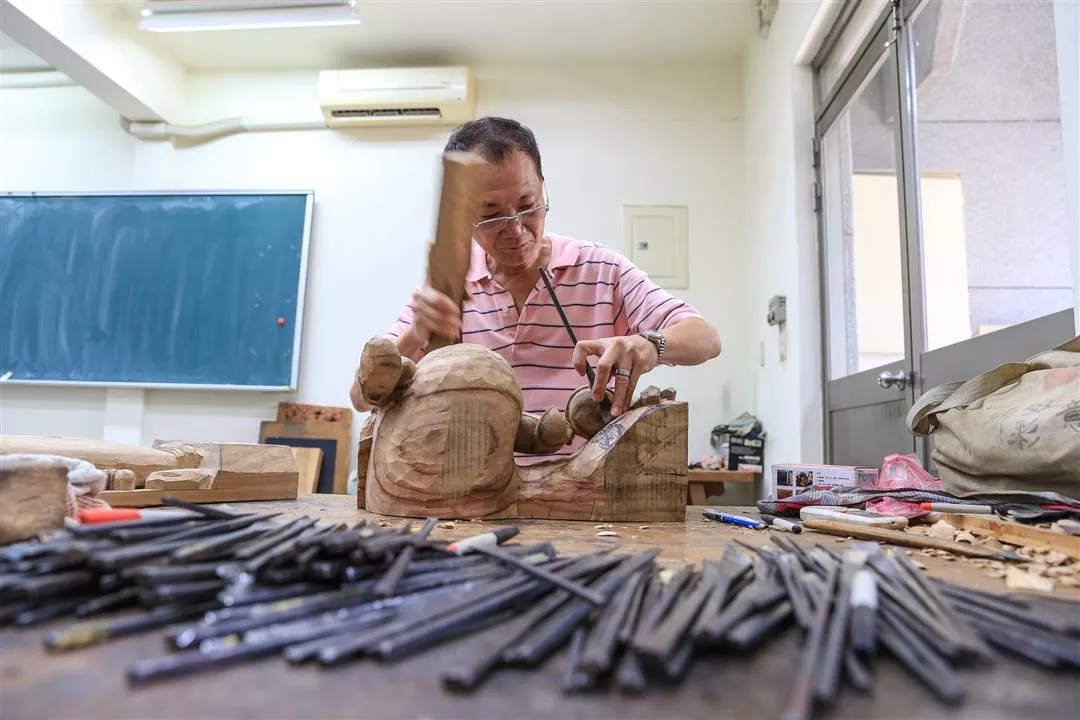A temple treasury for immortal arts
For generations, Zushi Temple has been the chief religious center for Sanxia, Tucheng, Yingge, Daxi, and other nearby towns. Rebuilt for the third time in 1947, the construction was led by local artist and professor Li Mei-shu. The temple combines unique architecture with splendid works of art—carvings in stone and wood and copper engravings. It has earned a reputation as a “temple of Eastern arts” and teems with life even today.
Woodcarving master Hong Yaohui, who worked on the temple reconstruction from 1986 to 2001, began apprenticing as a wood carver after graduating from junior high school. He has traveled all over Taiwan with his teacher, working on wood carvings at various temples and developing a solid foundation in his craft.
Today there are few young people who want to study the craft. After more than three decades of experience, Hong knows the hardships involved. Yet devoted to the mission of passing on his skills, he offers university courses in the hopes of finding students to carry on the tradition.
When ceramics are mentioned, people immediately think of the town of Yingge, next to Sanxia. But when master ceramist Li Zhihao established a creative base, he instead chose Sanxia. Li, who originally studied sculpture and started his career in the field, took a job at a pottery by chance. Since he tends to be led by his passions, Li found himself working there for the next decade, accumulating a thorough understanding of pottery making techniques.
Li has taken his passion for carving and combined it with the potter’s art, and through trial and error discovered his own creative path. “In the creative process, one must speak with the clay,” he says. Harmonizing the three elements of clay, fire, and passion is essential to ceramic art, according to Li. In order to highlight the beauty of his engraving on his ceramics, he decided to forgo glazing. He also began to experiment with the firing process and added the local clay of Sanxia to his array of raw materials. “Sanxia’s natural environment is excellent, including the quality of the water and the clay,” he explains. “Sanxia clay is particularly special because it is rich in minerals. After firing in the kiln, enchanting qualities emerge.”
Different types of clay, moreover, produce varied surface textures and patterns. The ash from the firing process also lends the pieces unique coloring, giving Li’s creations a natural, unadorned appearance. But it is the subtle details that reveal the extraordinary attributes of his work. Through its use in different settings—whether as part of tea sets or table settings or as decorative objects—Li’s ceramic art reveals an effortless beauty against the backdrop of daily life.

Hong Yaohui works with quiet intensity, skillfully utilizing the woodcarver’s tools and techniques. Through skills accumulated over time, he transforms ordinary wooden blocks into vivid works of art.